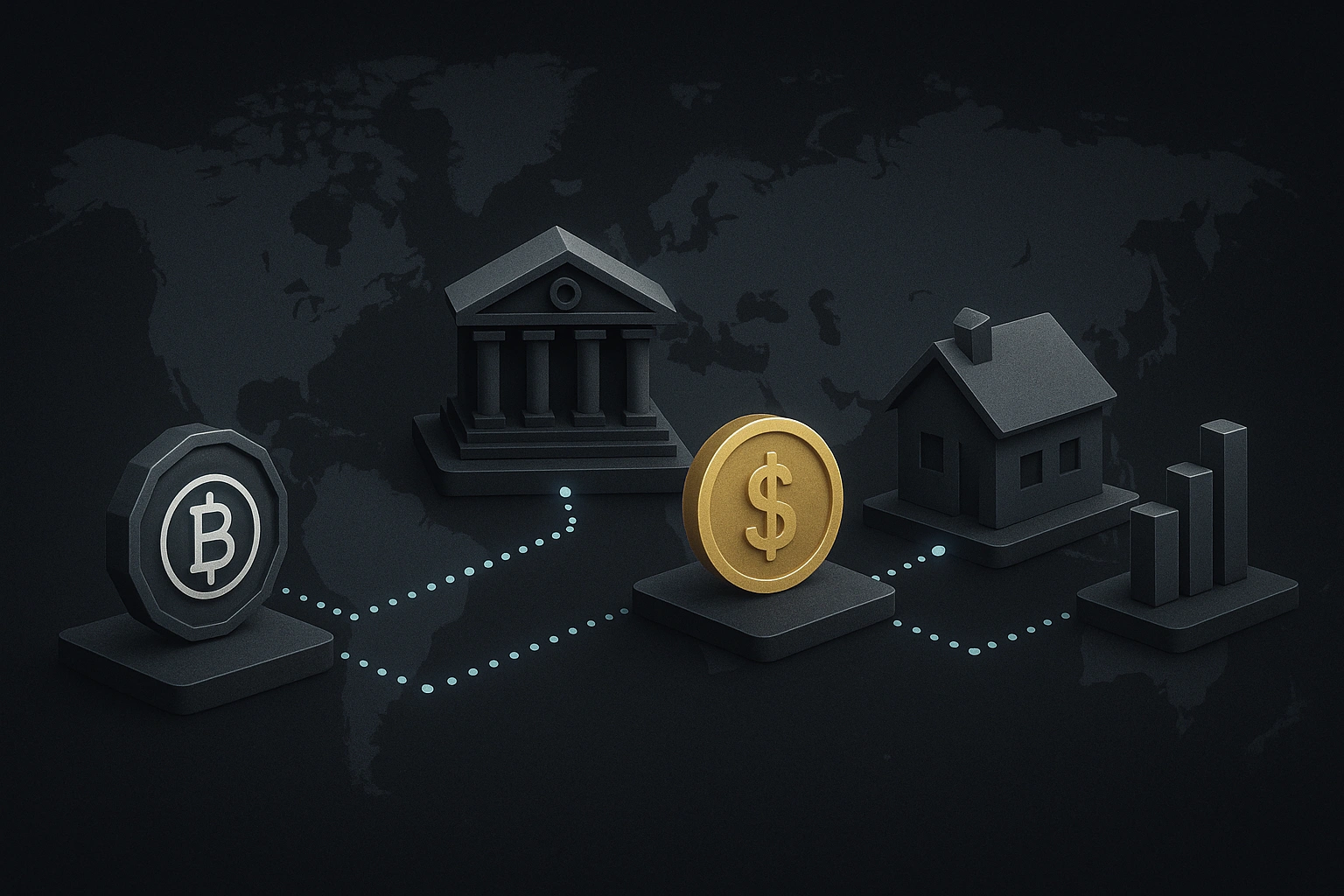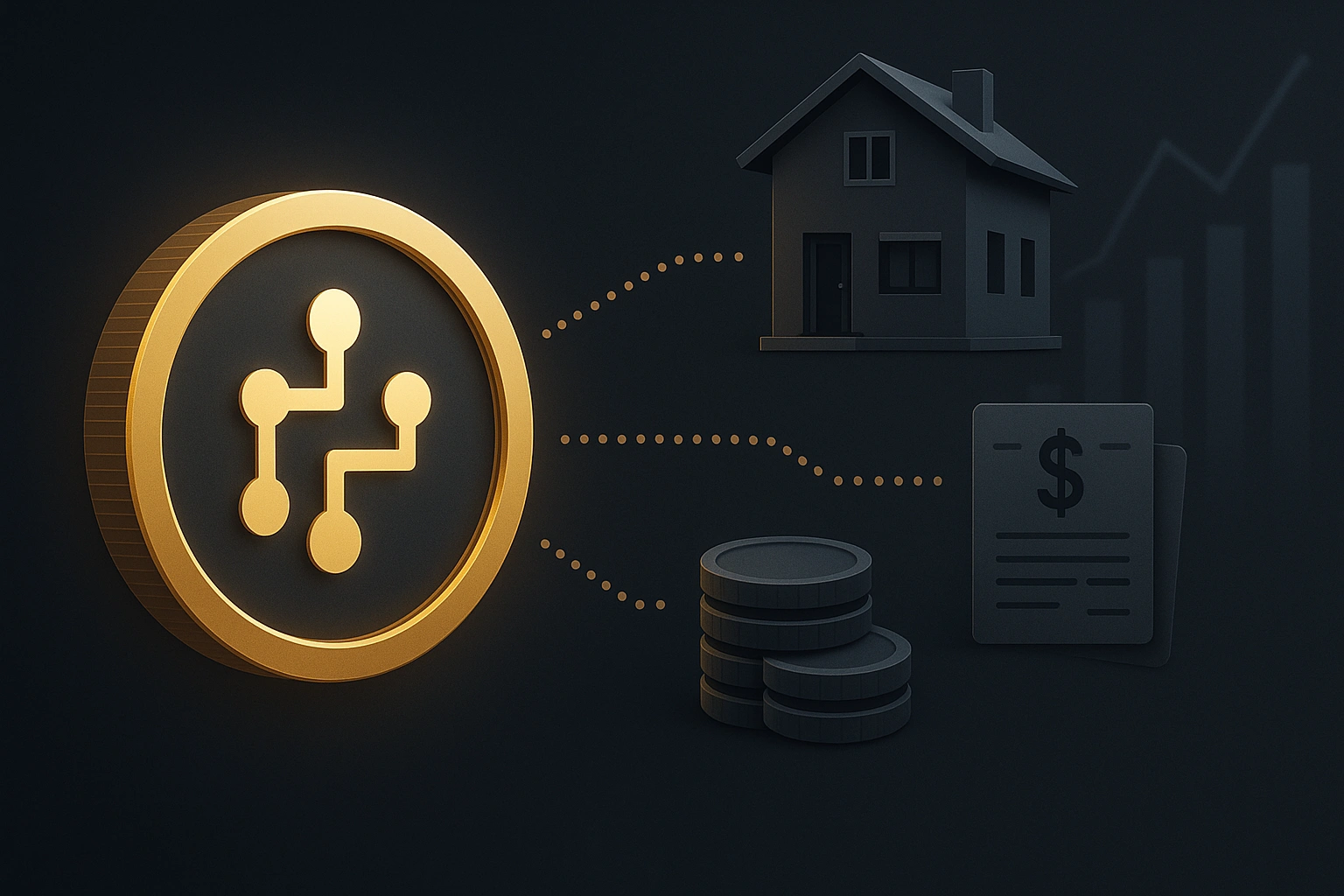The concept of tokenization of real-world assets (RWAs) has quickly moved from a futuristic vision to one of the most transformative forces in finance. By bridging physical assets and blockchain networks, assets tokenization is reshaping how people invest, trade, and manage value across borders.

From real estate and commodities to art and private equity — tokenization opens new doors for global investors and unlocks liquidity in markets once limited to institutional players.
What Is Tokenization of Real-World Assets?
Asset tokenization means converting ownership rights of tangible or intangible assets into digital tokens on a blockchain. Each token represents a specific share or fraction of the asset.
For example:
- A $1M property can be split into 1,000 tokens, each worth $1,000.
- An investor buying one token legally owns 0.1% of the property.
- All transactions are recorded on blockchain, ensuring transparency, immutability, and traceability.
This mechanism eliminates traditional intermediaries, reduces transaction costs, and enables fractional ownership, making investment more inclusive.
Types of Tokenized Real-World Assets
The universe of RWAs is expanding rapidly. Today, tokenized assets cover nearly every class of value:
- Real Estate – The largest and most active segment; investors can buy small fractions of commercial or residential properties.
- Commodities – Gold, oil, and carbon credits are increasingly represented as blockchain tokens.
- Art & Collectibles – High-value artworks or luxury goods can be divided into fractional tokens, democratizing access.
- Private Equity and Debt Instruments – Startups and private funds raise capital via tokenized shares or bonds.
- Intellectual Property – Royalties and copyrights can be tokenized for transparent distribution of income.
Benefits of Assets Tokenization
Tokenization delivers both financial and technological advantages. Key benefits include:
- Liquidity: Traditionally illiquid assets like real estate or fine art can be traded in seconds.
- Accessibility: Retail investors can invest in tokenized assets with small amounts of capital.
- Transparency & Security: Blockchain ensures that every transaction is publicly verifiable.
- 24/7 Global Market: No time zones, no banking hours — assets can be traded anytime.
- Reduced Costs: Fewer intermediaries mean lower fees and faster settlements.
These factors are driving massive institutional and retail interest, especially in regions with mature digital asset regulations.
Challenges and Regulatory Landscape
Despite its potential, real world assets tokenization still faces challenges:
- Legal Frameworks: Not all jurisdictions recognize tokenized ownership as legally binding.
- Compliance & KYC: Anti-money laundering rules must adapt to on-chain investment models.
- Technology & Standards: Interoperability between different blockchains remains a key issue.
- Custody & Security: Protecting digital tokens representing real assets requires robust infrastructure.
Regulations such as the EU’s MiCA framework or U.S. SEC guidelines are gradually bringing clarity, fostering safer adoption for both issuers and investors.
How to Invest in Tokenized Assets
Interested in entering this new market? Here’s how investors can start:
- Choose a trusted platform that offers regulated tokenized assets.
- Complete KYC verification to comply with local laws.
- Analyze the asset’s fundamentals — property location, yield, liquidity, etc.
- Purchase tokens directly with fiat or crypto.
- Monitor your portfolio using blockchain explorers or integrated dashboards.
Always evaluate the legal rights attached to each token — some represent equity, others profit-sharing or access rights.
The Future of Real-World Asset Tokenization
The global market for tokenized assets is projected to reach $16 trillion by 2030, according to Boston Consulting Group. Financial institutions are exploring blockchain-powered asset management, while fintech startups are launching RWA investment platforms for everyday users.
As the world shifts toward digital finance, asset tokenization is not just a trend — it’s the foundation for a more inclusive, transparent, and efficient financial system.
Final Thoughts
The tokenization of real-world assets is redefining how we perceive ownership, liquidity, and investment. It empowers individuals to invest in tokenized assets that were once out of reach and enables markets to operate with unprecedented transparency.
For investors and innovators alike, RWAs represent the bridge between traditional finance and Web3 — and that bridge is already being crossed.




